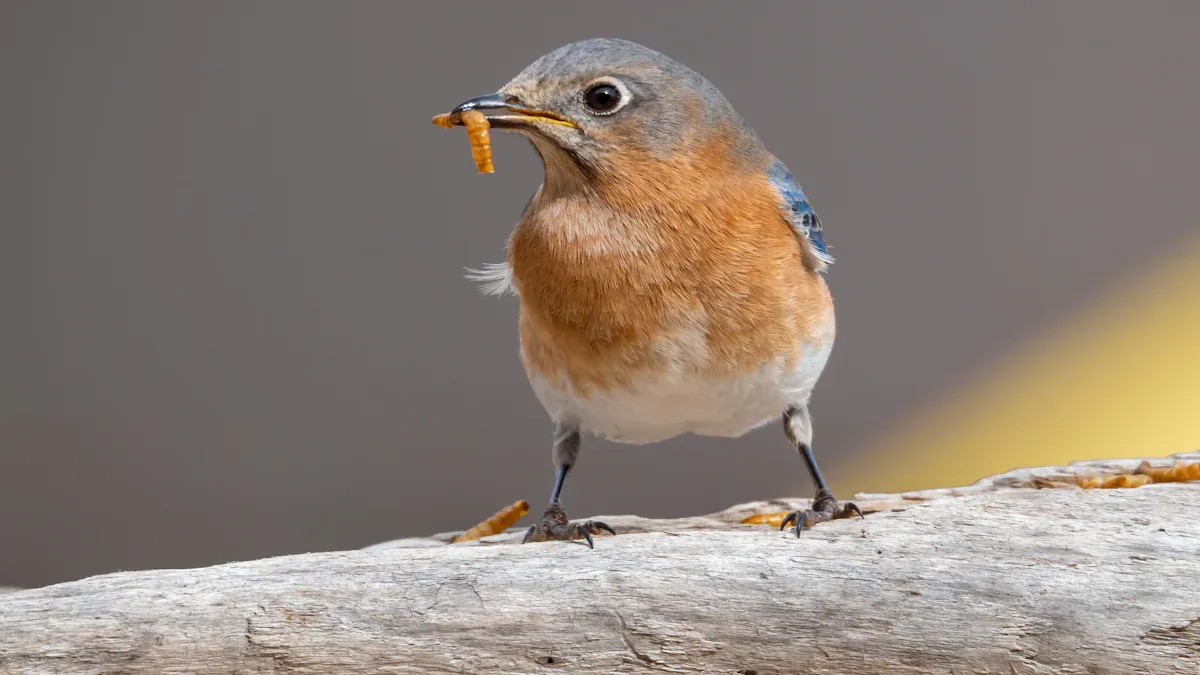
Mealworms are indeed the missing link for healthier, more vibrant backyard bird populations. They provide a concentrated source of protein and essential nutrients. Seed-only diets often lack these vital components. Incorporating mealworms enhances bird health significantly. It also attracts a wider diversity of species to your feeders. Mealworms for Bird feeding truly transforms your backyard.
Key Takeaways
- Mealworms give birds important protein and fats. These nutrients help birds grow strong and stay healthy.
- You can easily add mealworms to your bird feeders. This helps attract many different kinds of birds to your yard.
- Mealworms help baby birds grow well. They also give adult birds energy for flying and nesting all year.
Nutritional Powerhouse: Why Mealworms for Bird Health
Protein-Rich Fuel for Birds
Mealworms offer a powerful protein source for birds. This protein is vital for their muscle development and overall strength. Mealworms contain an outstanding balance of essential amino acids. These amino acids are crucial for muscle growth and repair. For example, sulfur-containing amino acids like cystine and methionine are essential for feather growth. Feathers are mostly keratin, which needs these amino acids. Methionine also helps feather follicle development. Branched-chain amino acids such as valine, isoleucine, and leucine are abundant in feather proteins. They are important for proper feather development. A lack of these can cause abnormal feathers.
Mealworms provide a significant amount of protein. Live mealworms contain about 20% protein. Dried mealworms offer even more, with up to 60% protein. Raw larvae can have 14 to 25 grams of protein per 100 grams. This high protein content helps birds build and repair muscles. It keeps them strong and active. The protein and fat in mealworms give birds concentrated energy. This energy helps them during demanding activities. Long flights or busy nesting periods require much energy. Mealworms have a crude protein content from 43.3% to 60.2%. They also provide 598 kcal per 100 grams. This makes them a high-energy snack. They act as an excellent energy booster. This fuel is needed for flying, foraging, and caring for young. During colder months, mealworms help birds store energy. They also help birds maintain body heat. Regular consumption of mealworms enhances avian stamina. This allows for longer flights and foraging. This is especially good for migratory species or birds in cold climates.
Essential Fats and Fiber for Vigor
Mealworms also provide essential fats and fiber. These components contribute to a bird’s vigor and overall health. Oleic acid is the most common fatty acid in mealworm larvae. It typically makes up 30% to 60% of their fat content. Palmitic acid and linoleic acid are also important fats found in mealworms. The specific amounts of these fatty acids can change based on what the mealworm eats. These fats, especially linoleic and oleic acids, serve as a concentrated energy source. They help birds cope with harsh weather. They also support demanding activities.
Beyond fats, mealworms are rich in dietary fiber. This fiber is crucial for healthy digestion in birds. It helps maintain a balanced digestive system. Fiber reduces the risk of digestive problems. It ensures birds process food efficiently. This contributes to their overall well-being. Mealworms can break down cellulose. Cellulose is a main part of fibrous waste. This ability shows their role in processing fibrous materials. This directly relates to their fiber content and its digestive benefits.
Vital Vitamins and Minerals from Mealworms for Bird Diets
Mealworms offer vital vitamins and minerals. These nutrients are essential for bird diets. They support many bodily functions. B vitamins contribute to various bodily functions. These include metabolism and immune system support. For example, B2 (Riboflavin) and B5 (Pantothenic Acid) support energy conversion. Vitamin E also contributes to metabolism and immune system support. It is essential for maintaining cellular health.
Essential minerals are also present in mealworms. Calcium and phosphorus are two important examples. Calcium promotes healthy bone growth. It also helps form strong eggshells. Phosphorus is another essential mineral. Birds use it for healthy bone and cell membrane development. Mealworms contain calcium, typically 0.2 to 0.5 percent by dry weight. Calcium is crucial for bird bone health and eggshell formation. These minerals ensure birds have strong skeletons and healthy offspring.
Seamless Integration: Adding Mealworms for Bird Appeal
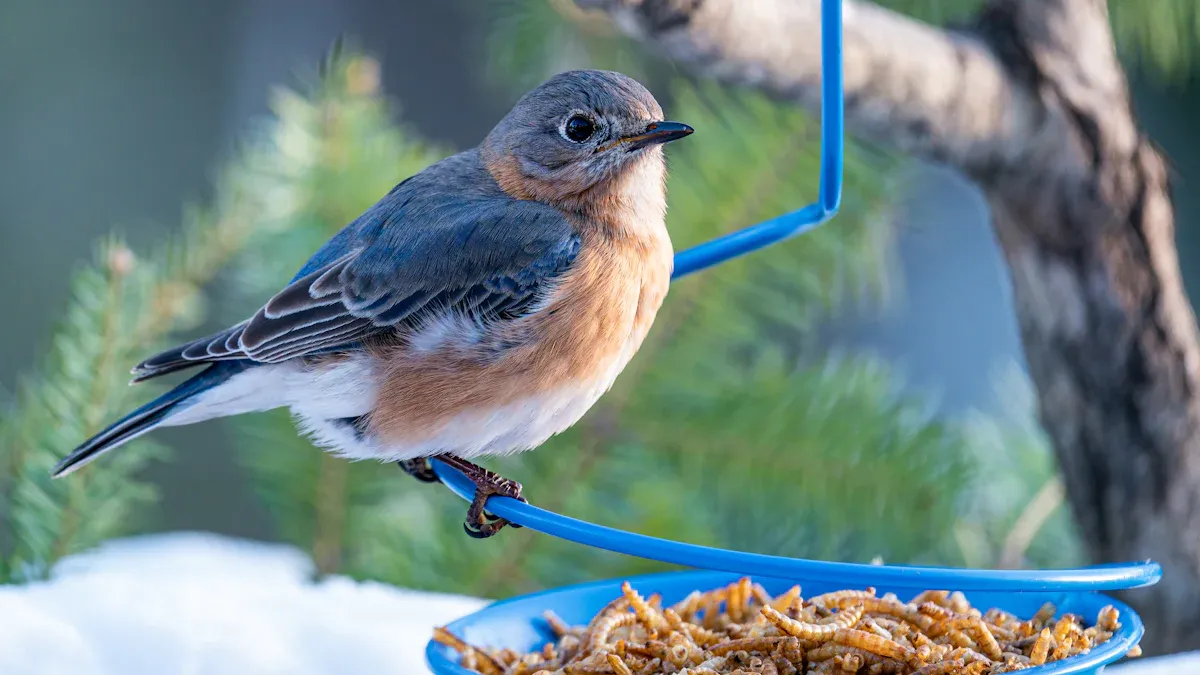
Easy Ways to Offer Mealworms
Offering mealworms to birds is simple. You can provide them in various forms. Live mealworms are a favorite for many birds. Place them in a shallow, smooth-sided dish. This prevents them from crawling out. Dried mealworms are also convenient. Mix them directly into your birdseed. You can use a tray, tube, or hopper feeder. Some people rehydrate dried mealworms. Soak them in warm water for 30 minutes to an hour. This makes them easier to digest. Producers often blanch or freeze mealworms for long-term storage. This process gently kills them. It also reduces harmful microbes and stops spoilage. This keeps their quality and nutrients intact. For home use, keep live mealworms in a cool, dry place, like a refrigerator. This slows their metabolism. Store dried mealworms in an airtight container. This maintains their freshness.
Mimicking Natural Insect Diets
Mealworms closely resemble the natural diet of many wild birds. Birds naturally eat many insects. During the breeding season, insects make up a large part of their diet.
| Habitat | Percentage of Arthropods in Diet |
|---|---|
| Temperate Forests | ≥ 75% |
| Temperate Grasslands | ≥ 75% |
| Agricultural Areas | ≈ 95% |
| Desert Birds | ≈ 85% |
Caterpillars alone can be 20–90% of nestling diets for many species. Mealworms offer a similar nutritional profile. They provide healthy fats like omega-6 and omega-3. These are crucial for sustained energy. They also contain essential vitamins and minerals. These include copper, iron, and B vitamins. Mealworms closely resemble natural insects in texture and size. This makes them an appealing food.
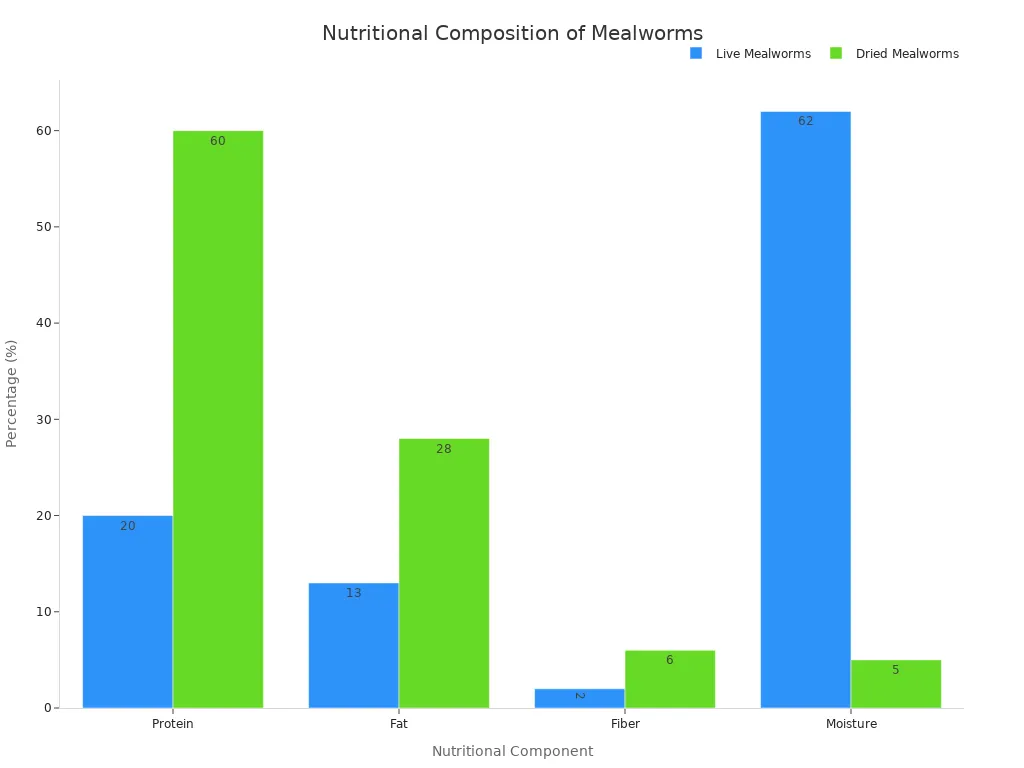
Year-Round Benefits of Mealworms for Bird Feeding
Mealworms offer benefits all year. During winter, their rich fat content helps birds stay warm. Their high protein supports growth and feather development. This is also important for egg-laying and feeding chicks. During migration, birds need lots of fat and protein. These nutrients fuel their long journeys. Mealworms provide this essential energy. They are a high-quality food for migratory birds.
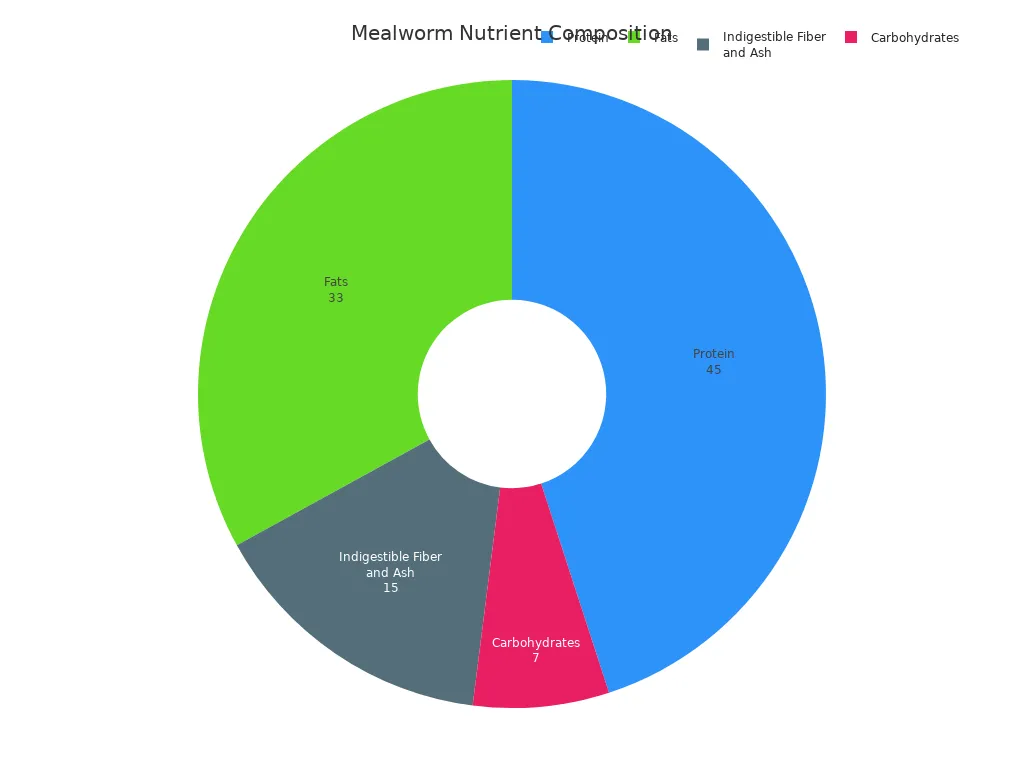
Attracting Diverse Species with Mealworms for Bird Feeders
A Magnet for Insect-Eating Birds
Mealworms act as a powerful magnet for many insect-eating birds. These birds naturally seek out insects as a primary food source. Offering mealworms in feeders attracts a diverse range of species. Birds like American Robins, Blackbirds, Cardinals, Chickadees, Finches, Grackles, Nuthatches, Orioles, Sparrows, Tufted Titmice, Warblers, Wrens, and Woodpeckers frequently visit mealworm feeders. Many omnivorous and insectivorous bird species benefit significantly from mealworms. These include:
- Black-capped Chickadees
- Nuthatches
- Orioles
- Grosbeaks
- Woodpeckers
- American Robins
- Northern Cardinals
- Bluebirds
- Wrens
These species primarily consume insects. Mealworms provide a crucial food source for them.
Supporting Nesting and Fledgling Birds
Mealworms play a vital role in supporting nesting adult birds and their young. During egg-laying and chick-rearing, birds need extra protein and nutrients. Mealworms supply these essential elements. They help adult birds maintain their energy levels. They also ensure healthy development for nestlings. Live mealworms are generally preferred for nesting birds. Even live mealworms should receive a nutritional diet before birds consume them. This ensures maximum benefit for the parent birds and their offspring. Studies show mealworms can improve the success rates of young birds.
| Species | Study Year | Outcome with Mealworms | Outcome without Mealworms (Control) | Significance/Notes |
|---|---|---|---|---|
| Blue Tit | 1999 | Fledging success: 80% (fed) | Fledging success: 70% (control) | Significantly higher fledging success with mealworms. |
| House Sparrow | 2005 | Nestling survival: 92% (fed) | Nestling survival: 85% (control) | Significantly higher nestling survival with mealworms. |
| European Robin | 2010 | Fledging weight: 18g (fed) | Fledging weight: 16g (control) | Significantly higher fledging weight with mealworms. |
| Blackbird | 2015 | Nestling growth rate: 1.2g/day (fed) | Nestling growth rate: 1.0g/day (control) | Significantly faster nestling growth with mealworms. |
| Goldfinch | 2022 | Fledging success: 78% (fed) | Fledging success: 72% (control) | Significantly higher fledging success with mealworms. |
| Song Thrush | 2023 | Nestling survival: 88% (fed) | Nestling survival: 80% (control) | Significantly higher nestling survival with mealworms. |
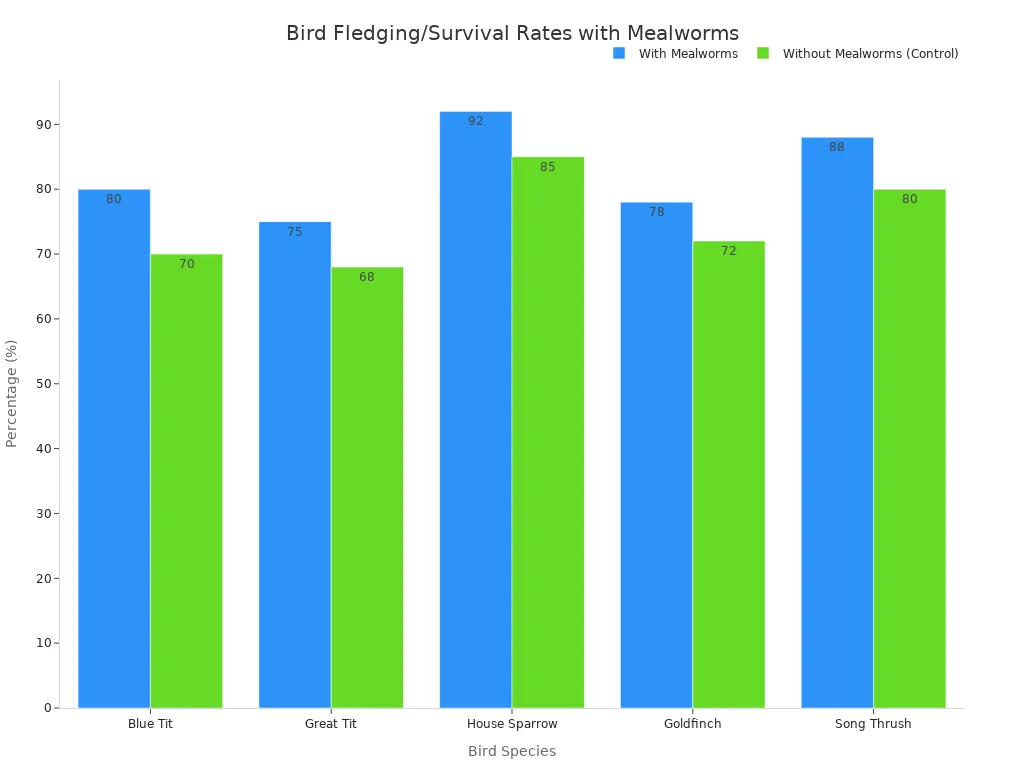
The chart illustrates how mealworms contribute to better outcomes for young birds. They support higher fledging success, improved nestling survival, and faster growth rates.
Welcoming New Feathered Visitors
Mealworms are a highly attractive food source for birds. This strong appeal can draw new feathered visitors to your backyard. Researchers have used mealworms in experiments to study bird behavior. They observed that birds consume mealworms rapidly. This indicates their high desirability as a food item. The presence of such an attractive food can increase the number of birds visiting feeders. It can also introduce new species to your feeding station. This ultimately enriches the biodiversity of your local bird population. Mealworms for Bird feeding truly enhances your backyard ecosystem.
Mealworms are a game-changer for enhancing your bird feeding experience. They significantly boost bird health, energy, and biodiversity in your backyard. This powerful food source attracts many species. Start incorporating Mealworms for Bird into your feeding strategy today. This simple step transforms your local avian ecosystem.
FAQ
How often should one feed mealworms to birds?
Mealworms are a supplemental treat. Offer them in moderation. They enhance a bird’s diet, not replace it.
Can all birds eat mealworms?
Many bird species enjoy mealworms. Insectivorous and omnivorous birds readily consume them. Even some seed-eaters might try them. 🐦
Are live or dried mealworms better for birds?
Birds often prefer live mealworms because they move. Dried mealworms offer convenience and easy storage. Both provide excellent nutrition for birds.


